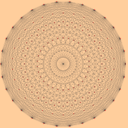
Arizona Winter School 2000
Ulmer's Course Description
Elliptic Curves over Function Fields and an Analog of the Gross-Zagier Theorem
Lectures:
- Review of elliptic curves over function fields
- Automorphic forms and analytic modularity
- Drinfeld modular curves and geometric modularity
- Overview of the Gross-Zagier computation
Prerequisites:
I will assume that the audience is familiar with the basic facts about elliptic curves (over Q), say at the level of Silverman's book. I'll also assume the basics of curves over finite fields and their functions fields, such as adeles, vector bundles/locally free sheaves, and a tiny bit of cohomology (H^1 of a line bundle). Although my discussions of automorphic forms and Drinfeld modular curves will start from the beginning, some knowledge of their classical counterparts should be quite helpful.
Suggested Reading:
For those who want to prepare a little, here are suggestions keyed to each lecture:
- The main point of the lecture will be to explain results of Tate (Bourbaki 306) and refinements by Milne (Annals 102) on the conjecture of Birch and Swinnerton-Dyer. The best preparation would be to convince oneself that the main results and conjectures about elliptic curves over number fields (Mordell-Weil, L-functions, heights, sha, BSD) also make sense over function fields. At the end of the lecture, a willingness to believe in a good (l-adic) cohomology theory will be useful.
- Chapter I of Weil's "Dirichlet Series and Automorphic Forms" (Lecture Notes 189) explains the connection between classical modular forms (functions on the upper half plane) and functions on adelic matrices. The function field version of these matrices will be my starting point. Chapter III of the same book gives a painless introduction to basics like Fourier expansions. (This whole volume, although out of fashion, is well worth reading, and not too difficult.)
- There is a vast literature on Drinfeld modules and Drinfeld modular curves, but a quick reference that is more than enough to get up and running is the first three chapters of Deligne and Husemöller's survey in Contemporary Math 67.
- Chapter I of Gross-Zagier (Inventiones 84) and the introductions to the following chapters are still the best overview of their work. The function field version is simply slavish imitation, with a few complications caused by working with a general base field.